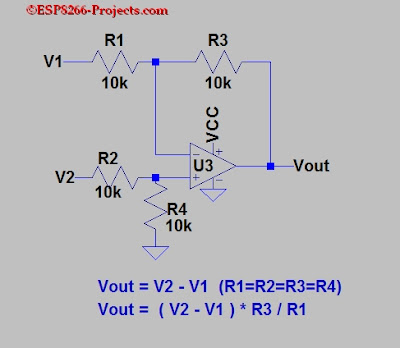Hello,
In the process to find better isolated current measurement solution I am exploring the posibility to use the ACS712 Current Sensor Board with the ESP8266. As they are all over the place, so why not.
Main identified problems to solve:
ASC712:
5 Vdc power supply device
measure positive and negative 5/20/30Amps, corresponding to the analog output 100mV/A BUT
"ZERO" point, means no test current through the output voltage is VCC / 2 =5v/2=2.5V !
ESP8266:
3V only device
ADC range max: 0-1V
So far, the solution that I found was to use a difference amplifier:

If you know any other way to do it or have any related ideas, please feel free to share

For reference:
ASC712 Current module meets ESP8266